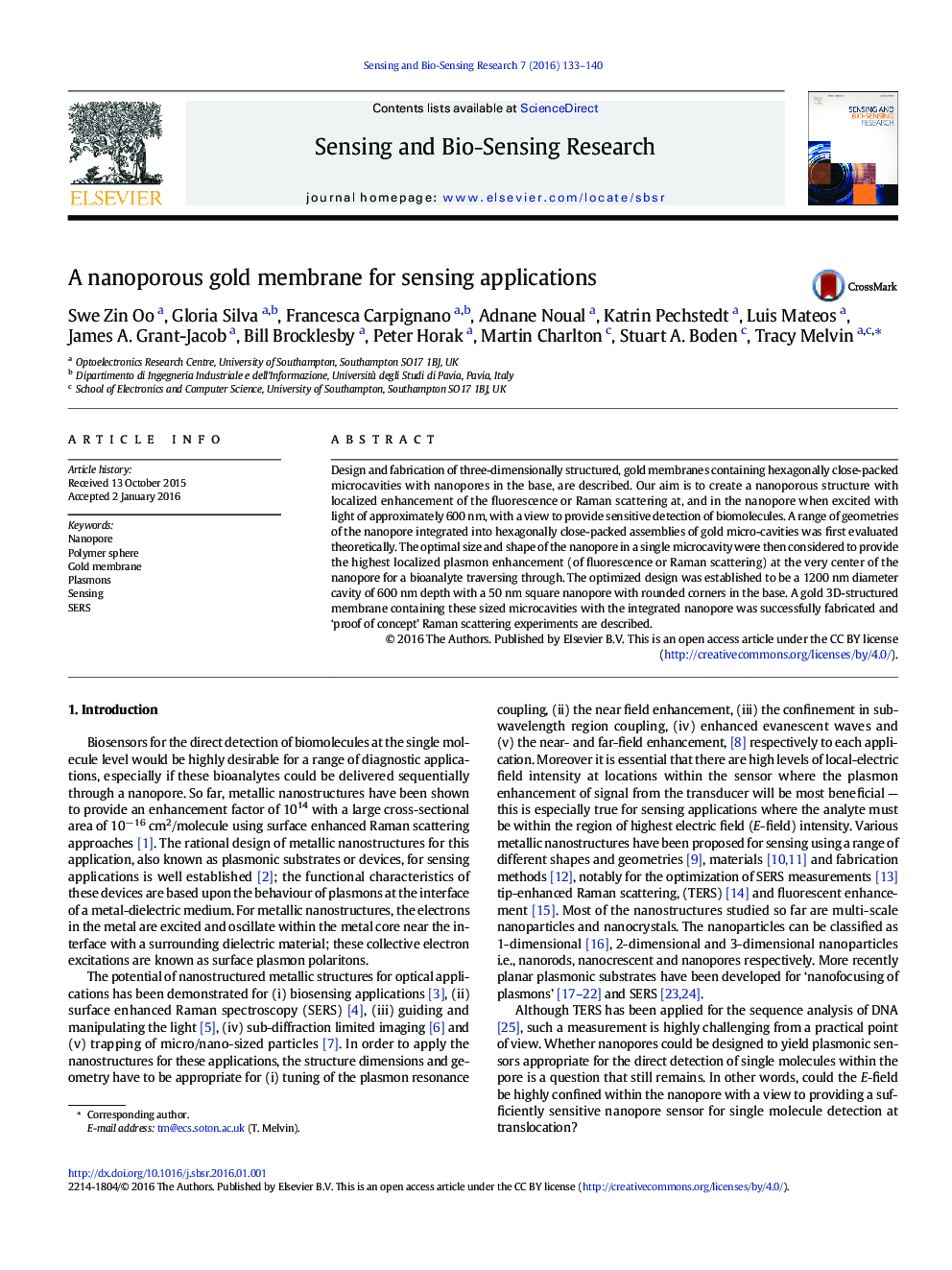| Article ID | Journal | Published Year | Pages | File Type |
|---|---|---|---|---|
| 807376 | Sensing and Bio-Sensing Research | 2016 | 8 Pages |
•3D structured gold microcavity membrane with a nanopore in the base designed•Theoretically for plasmon-enhanced detection•Fabrication of gold microcavity membrane with a nanopore•‘Proof of concept’ study showing enhanced Raman scattering detection
Design and fabrication of three-dimensionally structured, gold membranes containing hexagonally close-packed microcavities with nanopores in the base, are described. Our aim is to create a nanoporous structure with localized enhancement of the fluorescence or Raman scattering at, and in the nanopore when excited with light of approximately 600 nm, with a view to provide sensitive detection of biomolecules. A range of geometries of the nanopore integrated into hexagonally close-packed assemblies of gold micro-cavities was first evaluated theoretically. The optimal size and shape of the nanopore in a single microcavity were then considered to provide the highest localized plasmon enhancement (of fluorescence or Raman scattering) at the very center of the nanopore for a bioanalyte traversing through. The optimized design was established to be a 1200 nm diameter cavity of 600 nm depth with a 50 nm square nanopore with rounded corners in the base. A gold 3D-structured membrane containing these sized microcavities with the integrated nanopore was successfully fabricated and ‘proof of concept’ Raman scattering experiments are described.
Graphical abstractFigure optionsDownload full-size imageDownload as PowerPoint slide
